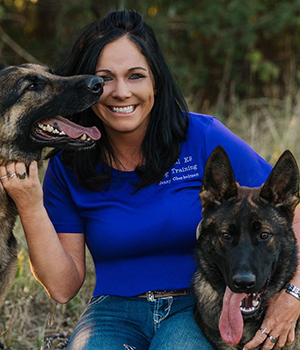Learn effective dog handling techniques at Ohana K9 Academy.
Learn effective dog handling techniques at Ohana K9 Academy.
Blog Article
Important Canine Training Methods for a Lifetime of Etiquette
Effective pet dog training is fundamental to fostering a mannerly friend that enriches our lives. Necessary strategies, such as favorable support and constant command training, not just improve obedience but likewise strengthen the bond between owner and pet. Moreover, recognizing canine habits and using socializing approaches can protect against possible problems before they develop. The trip doesn't finish with fundamental commands; attending to behavioral obstacles requires a nuanced strategy that lots of ignore. What are the essential components that can change your training experience and make sure lasting results?
Recognizing Dog Actions

In addition, comprehending the natural impulses and drives of a dog-- such as prey drive, social interactions, and territorial habits-- enables trainers to anticipate and handle specific actions. For instance, a dog with a solid prey drive may require various methods than one that is a lot more socially inclined.
Furthermore, very early socializing and exposure to different settings significantly affect a canine's habits and temperament. Positive experiences throughout important developmental durations can result in well-adjusted grown-up pets, whereas unfavorable experiences may cause stress and anxiety or hostility.
Positive Reinforcement Methods
Among the numerous pet dog training techniques, positive support approaches stand out for their performance and capability to enhance the bond in between pet dog and fitness instructor (Ohana K9 Academy). This strategy highlights satisfying wanted habits as opposed to penalizing unwanted ones, cultivating a much more cooperative and relying on connection
Positive support can take several kinds, including treats, praise, playthings, or playtime. The secret is to give prompt incentives when the dog displays the desired behavior, allowing them to make the connection between the action and the positive result. For circumstances, if a pet rests on command, providing a treat as soon as possible enhances that habits, making it more probable to be repeated.
Consistency is important in positive reinforcement training. Instructors must make use of the exact same cues and benefits to stay clear of puzzling the canine. Furthermore, varying the incentives can keep the pet's passion and motivation, transitioning from regular treats to periodic praise or play as the pet dog masters the habits.

Basic Command Training
Structure on the foundation developed with favorable support see page techniques, basic command training functions as a critical action in establishing an accommodating pet. This training commonly includes important commands such as "sit," "stay," "come," and "down - Ohana K9 Academy." Each command plays an important function in promoting effective interaction between the canine and its owner, boosting the overall bond
To launch basic command training, select a silent atmosphere totally free from interruptions. Begin with short, focused sessions lasting no even more than 5 to 10 minutes to keep your pet's focus. Use high-value treats as rewards, making sure the dog connects correct habits with favorable end results. When educating a command, use a clear, constant verbal cue come with by hand signals to reinforce understanding.
Persistence is essential; pets might call for various repetitions to understand commands completely. Regular technique enhances discovered commands, solidifying them in your pet's actions repertoire.
Socializing Techniques
In the world of pet dog training, socializing strategies are crucial for growing a well-adjusted and certain canine buddy. Effective socializing includes exposing your canine to a selection of article source settings, individuals, and various other animals in a controlled and favorable manner. The main objective is to aid your pet dog create a comfort level with diverse experiences, which can significantly decrease worry and stress and anxiety in unfamiliar situations.
Begin socializing throughout the crucial developing window of 3 to 14 weeks, when pups are most receptive to new experiences. Present your dog to different setups, such as parks, metropolitan locations, and homes with various other pets. Ensure these experiences declare by utilizing deals with and praise to enhance etiquette.
Team training courses are a superb method to reveal your pet to various other dogs and individuals in a structured environment. This enables monitored interactions, helping your canine find out suitable social cues. Normal outings and playdates with courteous pet dogs can additionally enhance social skills.
Addressing Behavioral Issues
Resolving behavioral problems in pets is a crucial facet of training that requires a methodical method and understanding of canine behavior. Common problems such as barking, hop over to here eating, hostility, and stress and anxiety can come from numerous aspects, including lack of socializing, not enough exercise, or perhaps clinical worries.

Additionally, establishing an organized routine that consists of normal workout and psychological stimulation can significantly relieve behavioral concerns. As an example, interactive toys can keep a pet engaged and lower damaging propensities. In cases of severe aggression or anxiousness, talking to a specialist dog fitness instructor or a veterinary behaviorist may be needed.
Conclusion
In conclusion, effective canine training methods, consisting of positive support, basic command training, and socializing, are vital for fostering good habits throughout a pet dog's life. Dealing with behavioral issues with a systematic strategy not just boosts obedience yet also strengthens the bond in between dogs and their owners.
Report this page